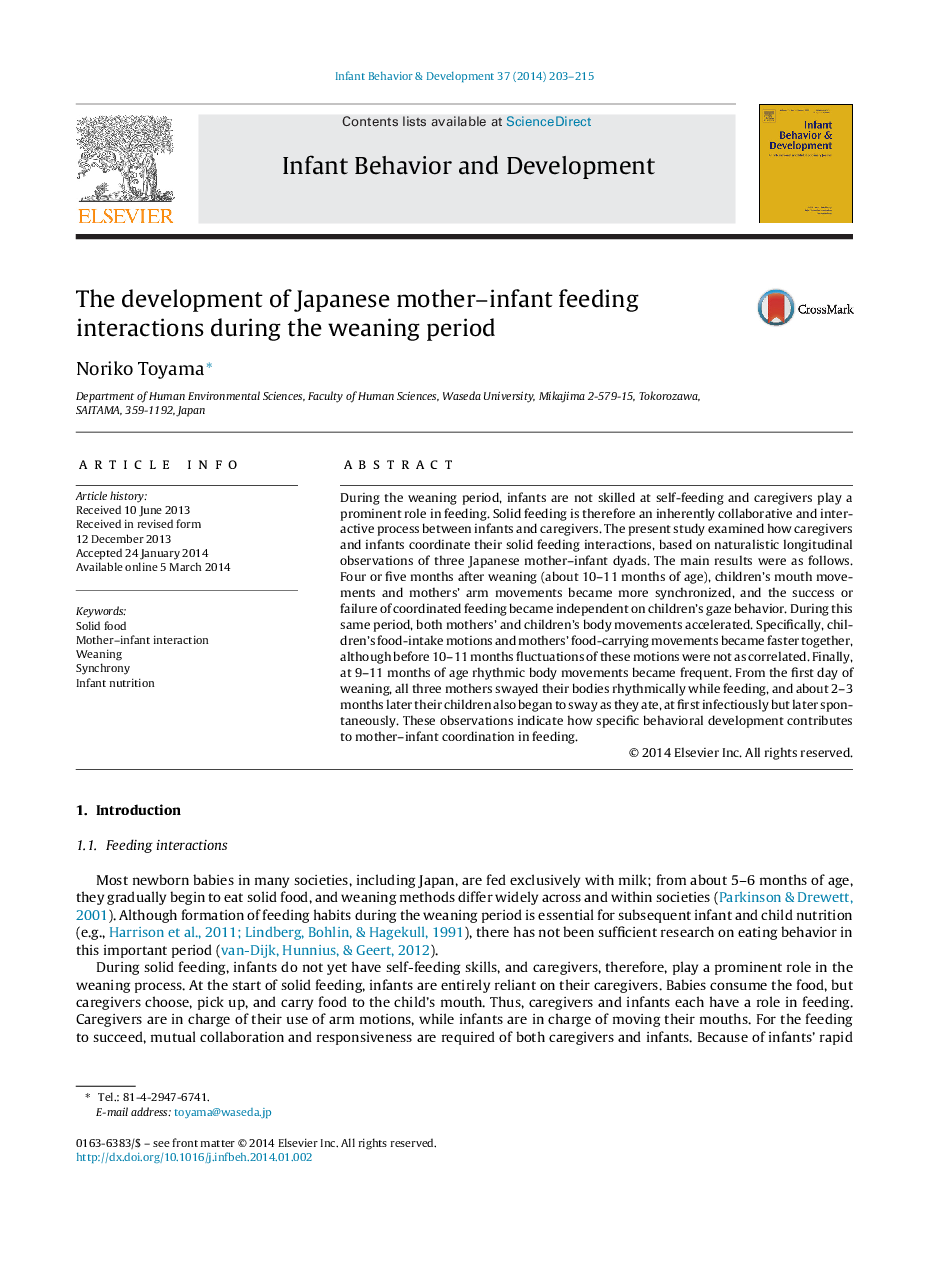| کد مقاله | کد نشریه | سال انتشار | مقاله انگلیسی | نسخه تمام متن |
|---|---|---|---|---|
| 917184 | 919249 | 2014 | 13 صفحه PDF | دانلود رایگان |
• This study examined how caregivers and infants coordinate their solid feeding interactions.
• Around 10–11 months of age, children's mouth movements and mothers’ arm movements became more synchronized.
• During this same period, the success or failure of coordinated feeding became independent on children's gaze behavior and both mothers’ and children's body movements accelerated.
• At 9–11 months of age rhythmic body movements became frequent.
• These results indicated how specific behavioral development contributes to mother–infant coordination in feeding.
During the weaning period, infants are not skilled at self-feeding and caregivers play a prominent role in feeding. Solid feeding is therefore an inherently collaborative and interactive process between infants and caregivers. The present study examined how caregivers and infants coordinate their solid feeding interactions, based on naturalistic longitudinal observations of three Japanese mother–infant dyads. The main results were as follows. Four or five months after weaning (about 10–11 months of age), children's mouth movements and mothers’ arm movements became more synchronized, and the success or failure of coordinated feeding became independent on children's gaze behavior. During this same period, both mothers’ and children's body movements accelerated. Specifically, children's food-intake motions and mothers’ food-carrying movements became faster together, although before 10–11 months fluctuations of these motions were not as correlated. Finally, at 9–11 months of age rhythmic body movements became frequent. From the first day of weaning, all three mothers swayed their bodies rhythmically while feeding, and about 2–3 months later their children also began to sway as they ate, at first infectiously but later spontaneously. These observations indicate how specific behavioral development contributes to mother–infant coordination in feeding.
Journal: Infant Behavior and Development - Volume 37, Issue 2, May 2014, Pages 203–215
